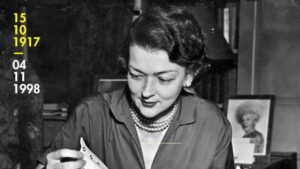Pioneering Astrophysicist: Cecilia Payne-Gaposchkin’s Achievements

Cecilia Payne-Gaposchkin, an astrophysicist renowned for her groundbreaking work, unveiled the elemental composition of stars, including the sun, a revelation that established hydrogen fusion as the sun’s energy source. Her expertise lay in the field of astrophysics, and her legacy thrived during the 20th century. Cecilia Payne-Gaposchkin’s affiliations encompassed esteemed institutions like Newnham College, University of Cambridge, and Harvard University, where she earned her doctoral degree in Astronomy and later became a faculty member.
Born in the UK in 1900, Payne-Gaposchkin’s early life was marked by curiosity in botany, chemistry, and physics. A pivotal lecture by A.S Eddington fueled her desire to become an astronomer. Facing gender barriers in Britain, Cecilia Payne-Gaposchkin embarked on an academic journey to the United States. Joining the Harvard College Observatory in 1923, Payne-Gaposchkin’s dedication led her to secure a Ph.D. degree by 1925. Despite gender-based obstacles, she persevered, eventually becoming a professor and department chair in 1956, a pioneering achievement for a woman.
Her most significant contribution was unveiling stars’ hydrogen-helium composition, revolutionizing astronomical understanding. Overcoming skepticism, she received the Henry Norris Russell Prize in 1976, a testament to her enduring impact. Payne-Gaposchkin’s journey was marked by resilience against gender bias and professional obstacles. Though initially overlooked, her brilliance gained recognition, and she passionately mentored women in astronomy. Her legacy lives on as an inspiration for breaking barriers and reshaping the universe of astrophysics.
Re-reported from the article originally published in Council on Science and Technology









